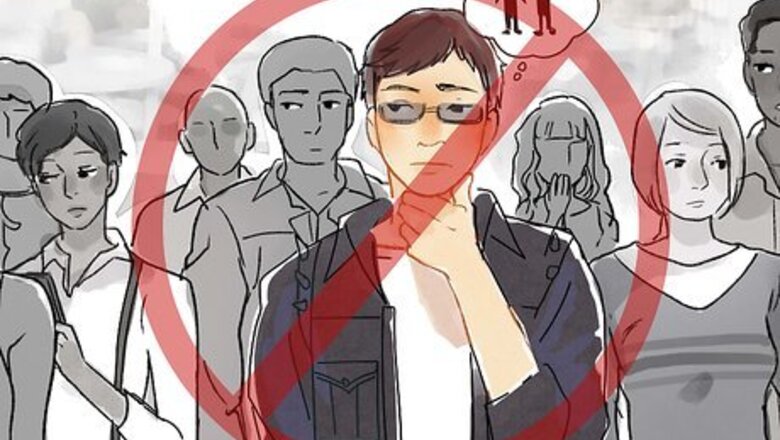
views
Dealing with Negative Criticism About Your Size
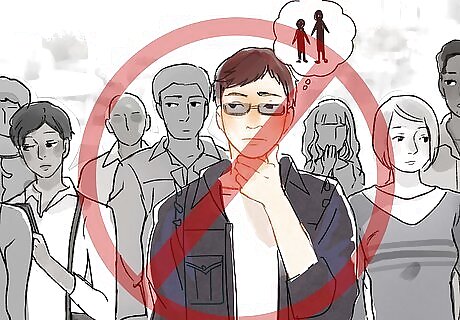
Recognize that your size is not the problem. Know that others who have insecurities about their own size or appearance are the ones to criticize or bully and create a problem out of your size that you would not otherwise have. Understand that other people may treat you badly about your size because they have also been mistreated, they think it is normal or acceptable because of their other interactions with peers or family, or because they see smaller size as being less desirable from TV shows, movies, or the internet. Imagine that no one made comments about you being small or otherwise mistreated you for it. Would you still have a problem with your size? This may help you to see that it is other people creating the problem, not your small size. Are there things about your small size that you like?
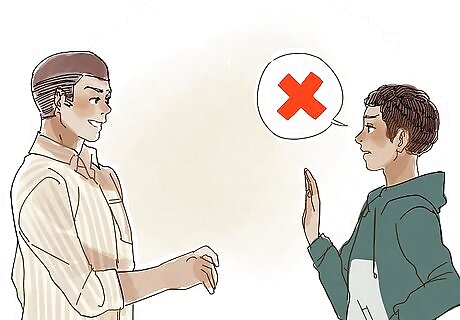
Respond to bullies or others who mistreat you for your size. Let people know when they say something about your size that you don't like, rather than quietly accepting it. Deal with bullies or other criticizers as kindly as possible, without resorting to calling them names or getting angry, as this may only encourage them to repeat their insults. For instance, to someone who pats you on the head and makes comments about your size, you can kindly ask them to stop. To anyone who says negative things about how small you are, you can calmly explain, “Actually, I really like being this size” or “Actually, I'm small because of a medical condition, so please don't make fun of me for it.” If you feel you cannot safely talk back to a bully, or someone threatens you with physical violence or another serious attack, go to a parent, teacher, guidance counselor, police officer, or any person you trust for help right away.
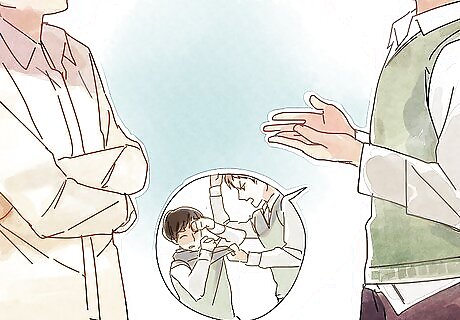
Get help from others. Ask for help from someone you trust if you cannot get through to someone who is offending or hurting you with speech or actions regarding your small size. Always notify the police if someone physically harms you or threatens to do so. If you are a child, go to a parent, teacher, guidance counselor, or other adults you trust and explain the situation to them. If you are an adult, talk to a friend, a mentor, a therapist, or the HR department of your job if it is an issue with a colleague. Find a friend or even a celebrity or other role model who is also small as another source of inspiration, guidance, or even an example to use when talking to others.

Move confidently. Avoid negative comments from others by showing confidence in your actions. Stand tall with your chin up and don't be afraid to take up space in a room when you're walking, standing, or sitting. Showing physical confidence has the additional benefit of adding size to your appearance. Averting your eyes to the floor, feeling dejected, and not wanting to take up space all manifest in your body appearing even smaller with drooping shoulders, head, etc. Make and hold eye contact with other people. Stand still with your feet squared toward someone you're talking to. Walk and speak slowly and steadily. These are all subtle body language that communicate confidence.
Gaining Size in Healthy Ways

Follow your doctor's recommendations. Talk to a doctor if you are concerned about an inability to gain weight, grow, or if you already know you have a condition that inhibits these things. Follow a doctor's advice on how best to treat, supplement, or live with something that affects your size. Ask about a possible nutrient deficiency or other common condition that could affect weight loss or ability to gain weight, especially if you have other unusual symptoms. Always consult with your doctor before embarking on any physical or diet regimen to attempt to gain size or weight.

Eat a balanced diet. Consume healthy, whole foods regularly and in accordance with any dietary or health restrictions. Count the calories you eat in a typical day and increase that number by 200 to 500 calories per day to start gaining weight if that is recommended by a dietician. Just be sure to avoid adding calories from processed junk foods. Eat protein from food like meat, eggs, and nuts. Focus on complex carbohydrates from foods like rice, whole wheat, and potatoes. Get healthy fats from olive oil, coconut oil, and avocados. Try eating five smaller meals throughout the day, or snack in between meals, to ensure you are getting enough calories.

Exercise to build muscle. Go to the gym or use home workout equipment to gain strength and health, and build muscle mass in a healthy way. Make sure you check out fitness videos and instructions for home equipment, and get guidance from gym staff or a personal trainer, to ensure that you have proper form when using any weighted equipment. Strength training workouts should consist of 8 to 12 repetitions each of 8 to 10 different workouts that target all different areas of your body. Do this type of workout at least twice a week to begin. Ask your doctor before beginning any new workout routine. Also, keep in mind that you don't need to work out to reach a particular goal or gain significant size; exercising can simply make you feel good and achieve overall health.
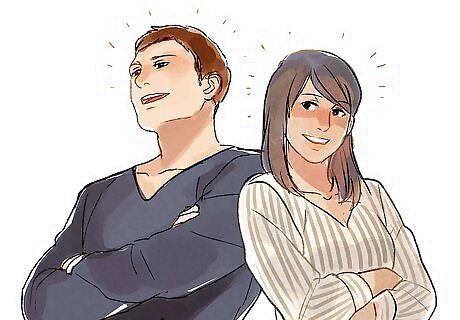
Accentuate height with clothing. Wear clothing that fits you well and has long, straight lines to help accentuate your height and flatter your small frame. When shopping women's clothing, try looking for flared pants, vertical stripes, and v-neck tops to elongate your body. Note that high heels can make you look and feel temporarily taller, but you may want to work to embrace your own size as it is. When shopping men's clothing, try outfits that are monochromatic, and choose slim cuts on shirts and pants. V-neck shirts are also a flattering choice. Smaller women can shop in the “petite” section of many department stores, while men can shop brands like Peter Manning to find clothing that fits well without further tailoring.
Using Small Size to Your Advantage
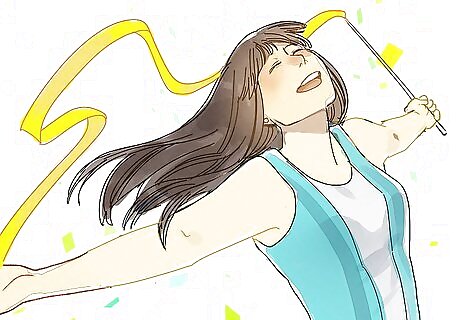
Join a sport like gymnastics or wrestling. Ask about how you can join a team through your school or a local club that's accepting new players. There are many sports and activities that small individuals, in particular, can excel at. Join a sport like wrestling, boxing, martial arts, dance, gymnastics, weightlifting, horse racing, and positions within other sports for which small size is an advantage or necessity. Smaller individuals typically do well in these activities due to a lower center of gravity and/or increased ability to move the body easily and quickly.

Fit into small spaces. Use your small size to comfortably fit into small areas, either for fun or out of necessity. Move through crowds more easily as a small individual, and others may also allow you to stand in front of them at concerts or other events where you might have difficulty seeing over taller people. Fit into more compact spaces and have more legroom on planes, in cars, or other forms of transportation that typically do not have much personal space. Play hide-and-seek or other games for which you may be able to conceal yourself better than other players.

Stand out from the crowd. Embrace your size as something that sets you apart from others, which you will appreciate more and more as you get older or as you try to define yourself in a particular industry or group. Use your small size or height to set you apart in industries like acting, dancing, and other careers that may focus on appearance. You can stand out from others of average height pursuing the same thing, and even build a personal brand around your unique size.

Save money on child's sizes and discounts. As you grow out of childhood, enjoy some of the advantages of continuing to appear young, which can get you child discounts and other perks. Shop in boys or girls sections of clothing stores, as both a way to find clothes that fit you better and save money on the cheaper garments. Ask about discounts for children or younger people at museums, movie theaters, and other event locations. Even if you do not fit the maximum age, you may be able to pass for younger to meet the discount requirements.
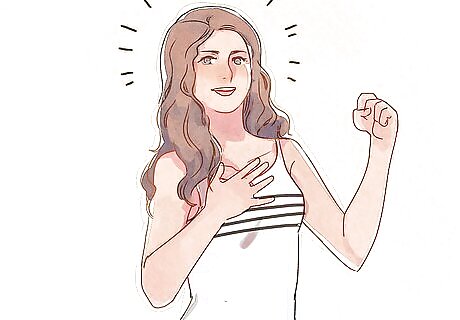
Enjoy correlated health benefits. Know that people of short stature are actually found in studies to also enjoy a number of other health benefits. Benefit from a reduced risk of cancer as a result of smaller size, which may be due simply to the fact that shorter individuals have fewer cells in their bodies, or have lower energy intake. Avoid complications of blood clotting, which is two and half times more likely to occur in taller and heavier people due to the distance that blood must travel in the body. Potentially live longer as a short person, as the hormone that controls height also governs aging.
Making Your Environment Safe and Comfortable

Check the ergonomics of your favorite places to work or study. Many desks and chairs are built for some average height person, so they might not fit you too well. Choose an office or task chair which fits you. It should, ideally, adjust low enough for your feet to rest flat on the floor. Also, check the depth of the chair. Your knees should fold over the edge while your back is supported. Armrests and lumbar support should, likewise, be able to be adjusted so they suit your height. Adjust the height of your office chair to a height which fits you. Make sure your feet rest comfortably on the floor when you're seated. If they don't, or if you must raise your seat to match too high a desk, place a footstool under your feet, or improvise another object, such as a ream of paper, box, or old book. Adjust the height of your desk, bench, or other work surfaces. If the work surface is not adjustable, as in the case of most kitchen counters, you could either choose a lower work surface (such as the kitchen table) or raise yourself. An aerobic exercise step is a good, sturdy place to stand, with the option to adjust the height. Adjust the height of your monitor or screen. Your eyes should be level with the top, or about three-quarters of the way up. Many modern screens have a height adjustment built in. Otherwise, look into getting a monitor arm or wall-mount. Get and use a keyboard tray, if necessary, to lower your keyboard and put it at an angle which keeps your wrists straight and relaxed. Try a smaller keyboard and mouse, if your hands are smaller. They may be sold as "portable" or "travel" devices.

Store frequently used items where you can see and reach them. Choose lower shelves for the items you use most often.

Reach lightweight objects overhead with a grabber, hook, or tongs. Try a long-handled tool for tasks such as cleaning high places, hanging holiday lights, and changing light bulbs.

Climb safely. Get a sturdy stepstool or ladder appropriate for the task. Keep it handy and place it on a solid, level surface. Never climb on improvised items, on shelves, or on chairs with swivels or wheels.

















Comments
0 comment